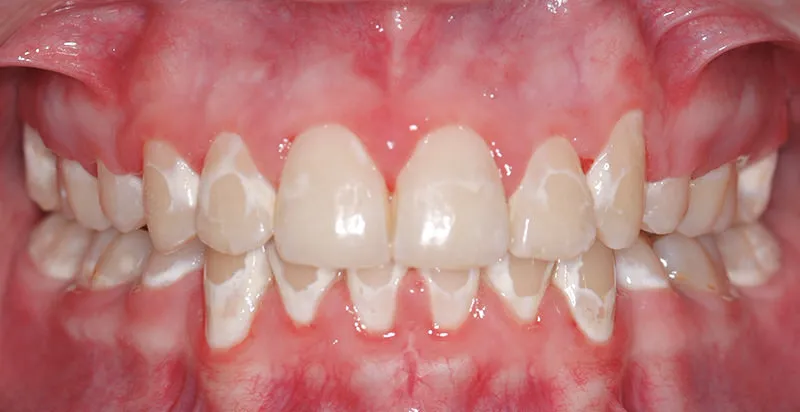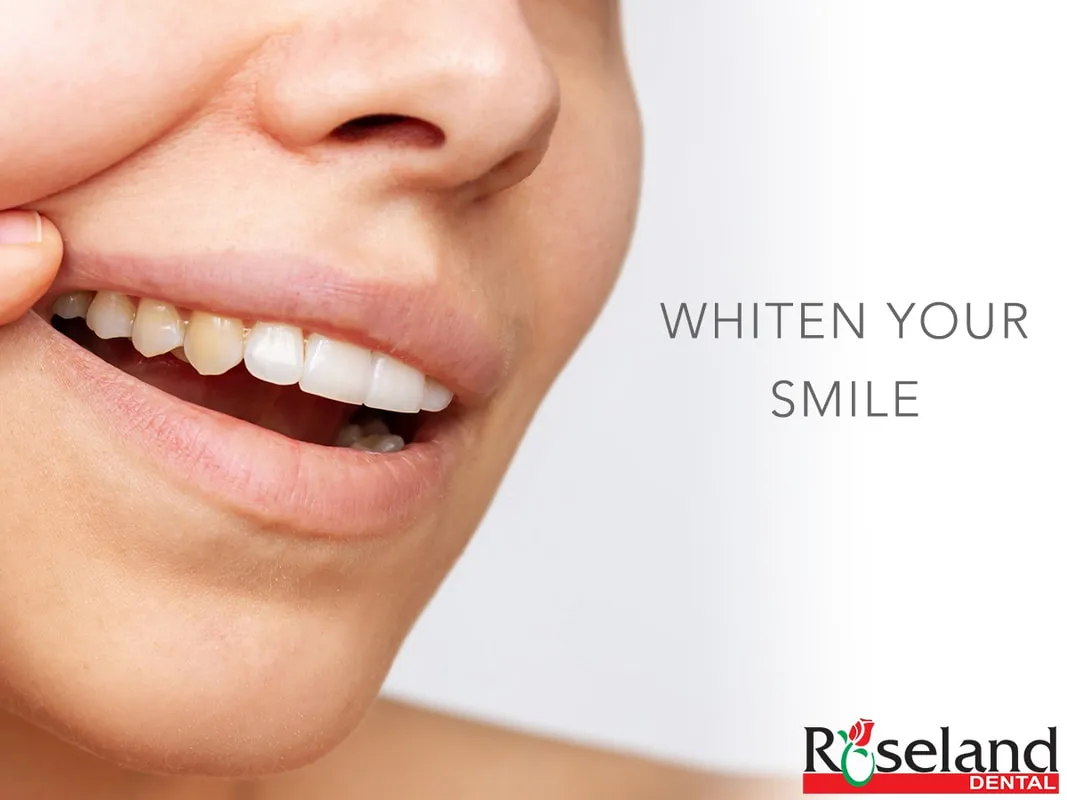Understanding White Spots After Whitening
Achieving a brighter, whiter smile is a common goal, and teeth whitening treatments have become increasingly popular. However, sometimes after whitening, individuals notice the appearance of white spots on their teeth. These spots can be a source of concern, but understanding their causes and how to address them is crucial. White spots, also known as decalcification or hypocalcification, are areas where the enamel has lost minerals. This can result in a change in the reflection of light, making the affected areas appear opaque or white. While they may be noticeable and aesthetically displeasing, it’s important to remember that these spots are often treatable. This guide provides an overview of white spots on teeth after whitening, including their causes, prevention, and various treatment options.
Causes of White Spots on Teeth
Several factors can contribute to the development of white spots on teeth after whitening. It’s important to recognize the underlying causes to better prevent and manage this issue. These causes can often be attributed to changes in the tooth enamel during the whitening process or pre-existing conditions that become more apparent after treatment. Understanding these causes will help you take the appropriate steps to address them.
Demineralization

Demineralization is the primary cause of white spots after whitening. The whitening agents, such as hydrogen peroxide or carbamide peroxide, can sometimes cause the enamel to lose minerals, particularly in areas where the enamel is already thin or has a different mineral density. This process weakens the enamel, making it more susceptible to the effects of whitening. This is why white spots often appear or become more visible after whitening treatments. Furthermore, certain whitening methods, such as those that use high concentrations of bleaching agents or that involve prolonged application times, can increase the risk of demineralization. This is why following your dentist’s recommendations is always important. As the enamel loses minerals, it becomes more porous, and light reflects differently, creating the appearance of white spots.
Uneven Whitening
Uneven whitening can also lead to the appearance of white spots. This can occur when the whitening agent doesn’t penetrate the enamel uniformly. Areas with thinner enamel or variations in the tooth’s mineral composition may absorb the whitening agent more readily, resulting in a lighter shade compared to surrounding areas. Similarly, pre-existing conditions, like enamel hypoplasia (a condition where enamel formation is impaired), can also contribute to uneven whitening and the prominence of white spots. These areas may not respond to the whitening treatment in the same way as the rest of the tooth, leading to a noticeable difference in color. This often appears as white spots or patches. Understanding the factors that contribute to uneven whitening will help you to mitigate their impact.
Prevention of White Spots Before Whitening
While it’s not always possible to completely prevent white spots, there are several strategies you can employ before teeth whitening to minimize their occurrence. Proactive measures can greatly reduce the likelihood of developing white spots, ensuring a more uniform and aesthetically pleasing outcome. Prevention is key, and these steps can make a significant difference in your teeth whitening experience.
Professional Dental Cleaning

A professional dental cleaning before teeth whitening is crucial. This procedure removes plaque, tartar, and surface stains that can interfere with the whitening agent’s effectiveness and potentially lead to uneven results. The dentist or hygienist will thoroughly clean your teeth, ensuring a smooth and clean surface. This preparation allows the whitening agent to penetrate the enamel uniformly, reducing the risk of white spots caused by uneven absorption. Regular professional cleanings not only improve the outcome of teeth whitening but also promote overall oral health.
Using the Right Whitening Products
Choosing the right whitening products is essential. Consult your dentist to determine the most appropriate type and concentration of whitening agent for your specific needs and dental condition. Over-the-counter whitening products can vary significantly in their strength and formulation. Your dentist can provide professional-grade whitening treatments or recommend products that are safer and more effective for your teeth. Following your dentist’s advice will minimize the risk of damage to your enamel and reduce the potential for white spots. It’s important to avoid using products that are too strong or that are not designed for your specific teeth, as these can increase the risk of enamel demineralization and the subsequent appearance of white spots.
How to Fix White Spots After Whitening
If white spots appear after teeth whitening, several effective treatments can improve the appearance of your smile. Depending on the severity and cause of the spots, various options can help to reduce or eliminate them, restoring the uniformity of your teeth’s color. It’s important to consult with your dentist to determine the best course of action for your specific situation.
Remineralization Treatments

Remineralization treatments aim to restore minerals to the enamel, helping to reduce the appearance of white spots. These treatments involve applying substances that help rebuild the enamel’s mineral structure. The goal is to strengthen the weakened areas and improve the tooth’s overall appearance. Several options are available, including professional treatments administered by your dentist and over-the-counter products for home use. Consistent application of remineralization treatments can significantly improve the appearance of white spots over time.
Fluoride Treatments
Fluoride is a powerful mineral that strengthens enamel and can help to remineralize areas affected by white spots. Your dentist may recommend professional fluoride treatments, which involve applying a high-concentration fluoride solution, gel, or varnish to your teeth. Fluoride strengthens the enamel, making it more resistant to acid attacks and helping to reverse early signs of demineralization. In addition to professional treatments, your dentist may also suggest using a fluoride toothpaste or mouthwash at home to provide ongoing protection. Regular use of fluoride products is an effective way to minimize the appearance of white spots and prevent further enamel damage. These fluoride treatments can also help to reduce the sensitivity of teeth that may have been caused by the whitening process.
Over-the-Counter Products
Several over-the-counter products can assist in remineralization and help to reduce the visibility of white spots. Toothpastes and mouthwashes containing fluoride are widely available and provide a convenient way to deliver fluoride to your teeth on a daily basis. These products help to strengthen the enamel and make it more resistant to the effects of demineralization. Some products also contain calcium phosphate, which can help replenish minerals in the enamel. It’s important to choose products with a proven track record and to follow the instructions carefully for optimal results. However, before you start using any new product, it’s best to discuss it with your dentist to ensure its suitability for your specific needs.
Cosmetic Dentistry Options

For more severe cases of white spots, cosmetic dentistry options may be necessary. These treatments can provide more dramatic and long-lasting results. Consulting with a cosmetic dentist will help you to determine which option is best for your situation. These options often involve procedures that are designed to improve the overall appearance of your smile, not just address the white spots.
Microabrasion
Microabrasion is a minimally invasive cosmetic dental procedure that can be used to remove white spots. This treatment involves the use of a mild abrasive agent, such as pumice or fine-grit diamond burs, along with an acid, to gently remove a thin layer of enamel where the white spots are present. This can effectively blend the affected areas with the surrounding enamel, reducing the appearance of the spots. The procedure is typically performed in a single visit, and the results can be highly effective. It is most successful for superficial white spots, and your dentist can help you decide if microabrasion is the right choice for you. After microabrasion, the teeth may be polished to give them a smooth and natural appearance.
Veneers
Dental veneers are thin, custom-made shells that are applied to the front surface of the teeth to improve their appearance. They are a more comprehensive solution for white spots that are particularly noticeable or widespread, and can also address other aesthetic concerns, such as cracks, chips, or discoloration. Veneers are made from porcelain or composite resin, and they are carefully designed to match the shape, size, and color of your natural teeth. The process of getting veneers typically involves preparing the teeth by removing a small amount of enamel, taking impressions, and then bonding the veneers to the teeth. Veneers provide a durable and long-lasting solution, offering a significant improvement in the overall appearance of your smile. They are a great option if you’re looking to completely transform your smile.
Maintaining Your Bright Smile

Maintaining your bright smile after teeth whitening and addressing white spots requires a consistent oral hygiene routine and some lifestyle adjustments. By adopting healthy habits and following your dentist’s recommendations, you can preserve the results of your whitening treatment and maintain a healthy, beautiful smile. The following steps will help you to keep your teeth bright and healthy.
Proper Oral Hygiene
Proper oral hygiene is the cornerstone of maintaining a bright smile and preventing the recurrence of white spots. Brush your teeth at least twice a day with a fluoride toothpaste. Be sure to brush for two minutes each time, and gently brush all surfaces of your teeth. Floss daily to remove plaque and food particles from between your teeth. Use a mouthwash to rinse away any remaining debris and to freshen your breath. Consider using an electric toothbrush, which can be more effective at removing plaque than a manual toothbrush. A consistent and thorough oral hygiene routine will help to keep your teeth healthy and prevent the formation of new white spots.
Regular Dental Checkups
Regular dental checkups and professional cleanings are crucial for maintaining a healthy and bright smile. Schedule regular appointments with your dentist, typically every six months, for checkups and cleanings. Your dentist can assess your oral health, identify any potential problems early, and provide professional cleaning to remove plaque and tartar. These routine visits are essential for preventing cavities, gum disease, and other dental issues that can affect the appearance of your teeth. Your dentist can also monitor the results of your teeth whitening and advise you on any necessary treatments for white spots. Proactive dental care is key to a long-lasting, beautiful smile.
Avoiding Staining Foods and Drinks

Avoiding or minimizing the consumption of staining foods and drinks is essential for preserving your bright smile and preventing future discoloration. Certain foods and beverages contain pigments that can stain your teeth. These include coffee, tea, red wine, dark sodas, and highly pigmented fruits and vegetables, such as berries. If you consume these items, rinse your mouth with water immediately afterward to reduce the risk of staining. Consider using a straw for drinks that are likely to stain your teeth. Brushing your teeth after consuming staining foods and drinks can also help to prevent discoloration. Being mindful of your dietary choices will contribute to maintaining the results of your teeth whitening treatment and keep your smile looking its best.
